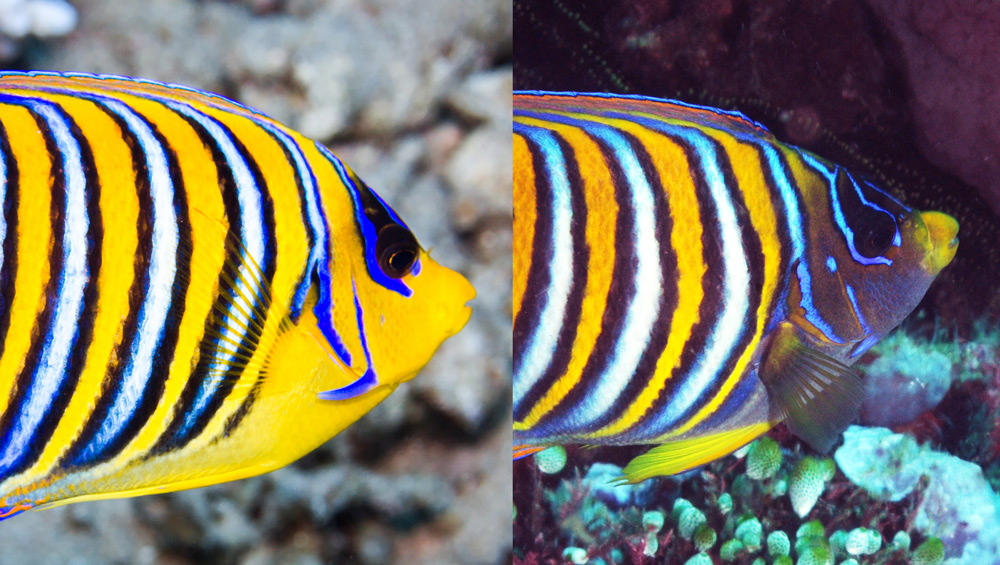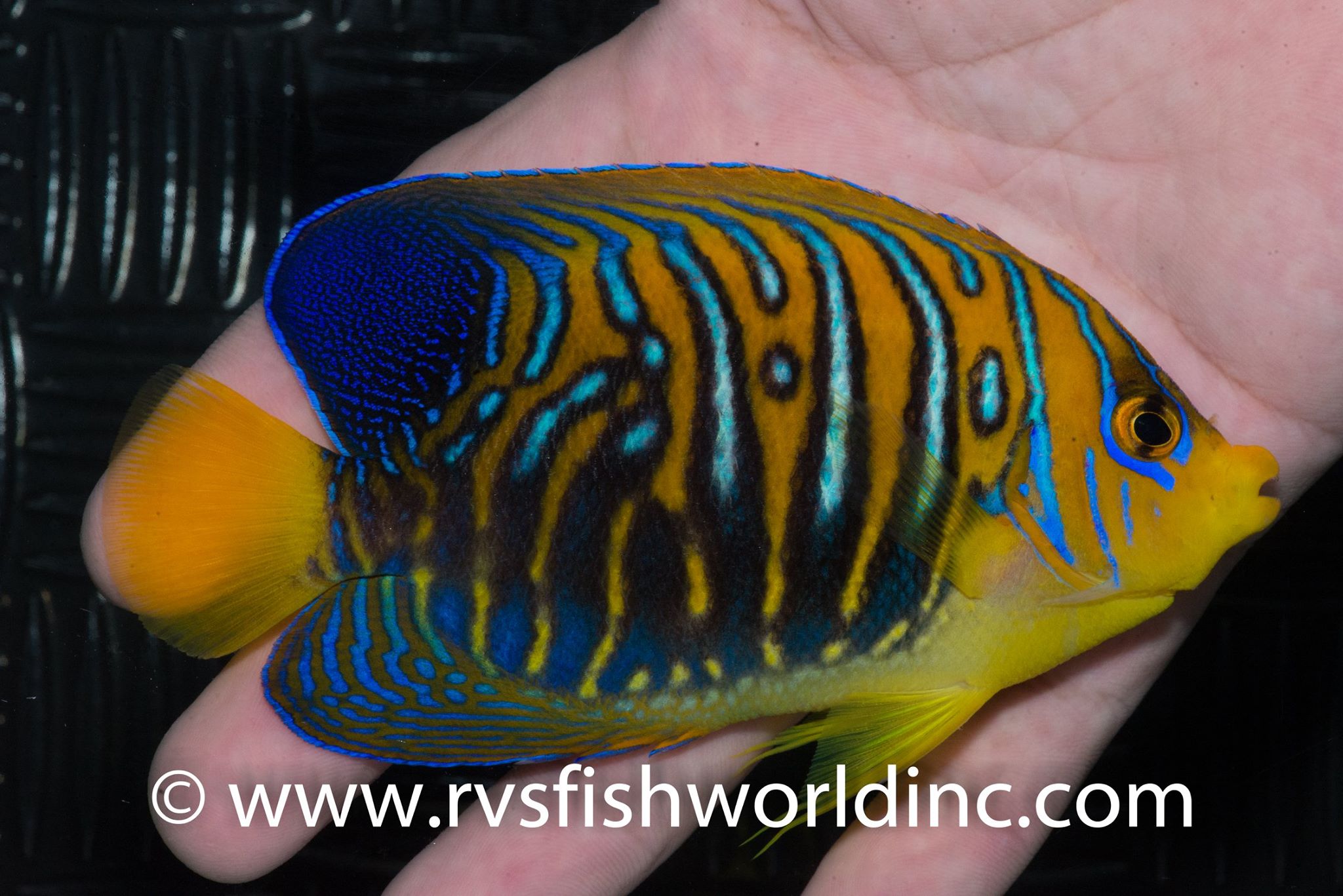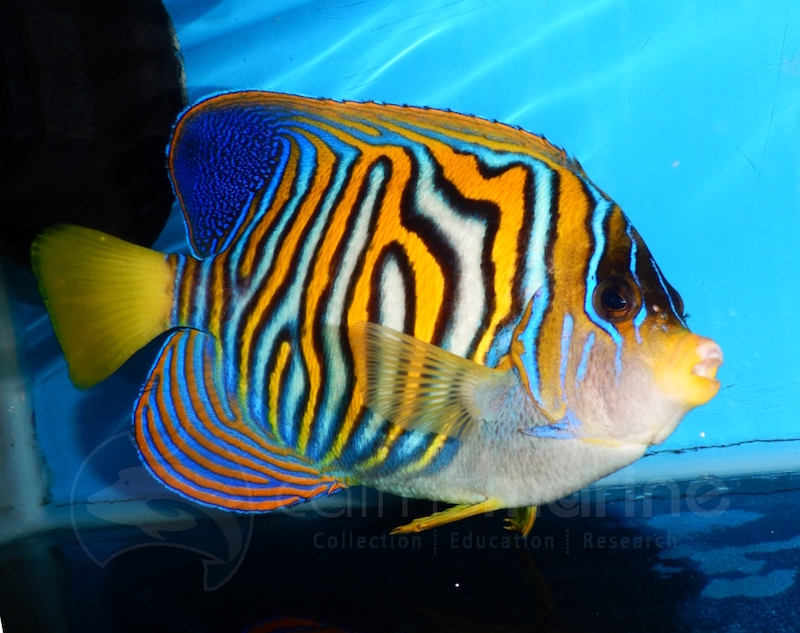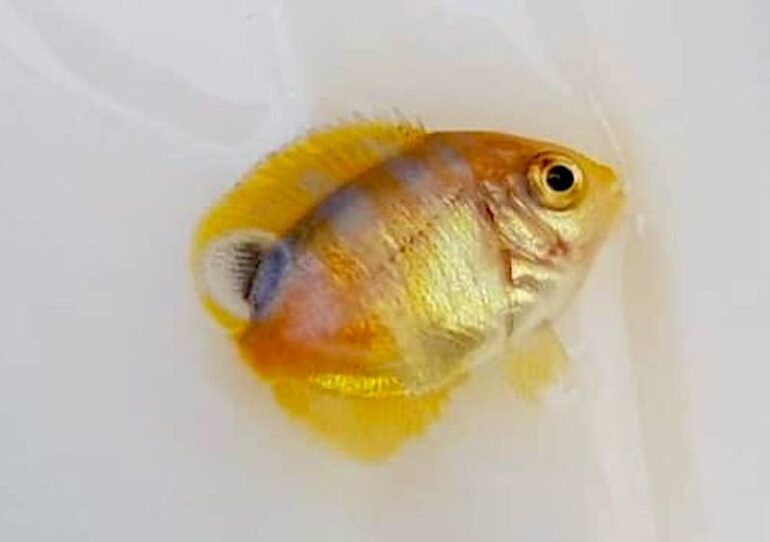The regal angelfish is one of the most iconic of all marine angelfishes and the last genus to be captive bred, until now. If we had to take bets on who would be the first to achieve a breakthrough with this beautiful blue, black and yellow striped angelfish, without hesitation we would have placed all our chips on Bali Aquarich and we would have been right.
But it doesn’t take a crystal ball to know that Mr. Wen Ping Su’s cutting edge and super productive ornamental fish aquaculture facility would have a great chance at cracking the breeding protocols for the regal angelfish. Just last month Mr. Su became the first breeder to successfully raise one of our favorite marine fish, the Red Sea purple tang, Zebrasoma xanthurus so it’s really not a surprise that he’s got the world’s first batch of captive bred Pygoplites.

Pygoplites is the only angelfish genus with only one species and curiously enough, it’s also the only one to include two subspecies, much rarer in marine fish than in freshwater species. For years divers and aquarists have recognized the general differences between the very bright, yellow bellied ‘Indian Ocean’ form of the regal angel, often collected from the Red Sea and the Maldives and aptly named Pygoplites diacanthus flavescens, and the ‘grey chest’ Indonesian form which is the P. d. diacanthus subspecies.
Bali Aquarich’s first captive bred regal angelfish is the local grey chested P. d. diacanthus subspecies and the small baby regal angelfish are already showing the unmistakable golden yellow color and the dorsal eyespot is just beginning to become dark. One thing we’re curious to know is the age of these fish as some marine angelfish have extremely long larval duration periods – up to 120 days in debelius if memory serves us correctly, to as little as like 45 days for the Koran angelfish.

But for us the real wildcard with these captive bred regal angelfish is how they will grow up and what will their stripes do. Many if not most captive bred marine fish, especially angelfish, show some artifacts of being aquacultured mostly in the form of irregular bars and aberrant coloration. Often times this is mostly seen in juvenile forms of large marine angelfish who grow out of it and into a completely different adult color and pattern.

But the regal angelfish channels that crazy striped pattern well into adulthood so we would be incredibly surprised if at least some, perhaps even most of Bali Aquarich’s captive bred regal angelfish don’t show some sort of irregular barring. Normally this would be undesirable for some species but in the case of regal angelfish, wild caught regals often command much higher prices since the species is normally very consistent in its appearance.
We really hope that Bali Aquarich’s first drop of captive bred Pygoplites is not a fluke, and they continue to develop and improve the protocols for this fish. Not only do we want to see many examples of captive bred regal angelfish with regular and aberrant coloration, but since this species doesn’t have the best track record of adapting to aquarium life, a steady supply of cultured regal angelfish would be very welcome and in very high demand.



